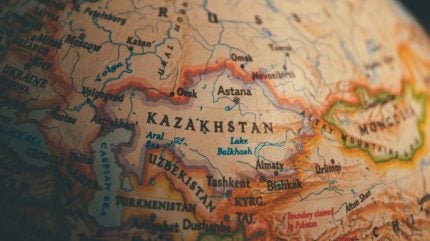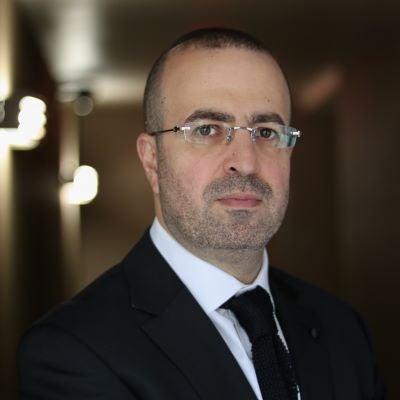
Kazakhstan hosts substantial reserves of critical minerals including rare earth elements (REEs), copper, lithium, tungsten, tantalum as well as other materials essential for modern technologies and the energy transition.
Recognising the strategic importance of these resources, the Kazakh Government has introduced efforts to attract foreign investment and technological expertise to develop its critical minerals sector.
Speaking during a presentation at last month’s PDAC convention in Toronto, Canada, Gabidulla Ospankulov, Chairman of the Investment Committee of the Ministry of Foreign Affairs of the Republic of Kazakhstan, said the country “remains open for business and international partnerships,” highlighting efforts by the Kazakh Government to attract foreign investment.
“Our government support packages include exemptions from corporate income tax, value added tax and custom duties, legislative stability [and] courses in investment contracts and agreements,” stated Ospankulov.
Pini Althaus, CEO of Cove Capital, a company actively engaged in exploring and developing critical minerals in Kazakhstan through its subsidiary Kaz Critical Minerals, also points to recent mining code reforms, streamlining of exploration licensing processes and the issuance of “numerous new licences to encourage exploration and development” as spurring investment in the central-Asian nation’s mining industry.
Yet despite these positive steps, Kazakhstan faces several challenges as it looks to grow its minerals and metals sector.

US Tariffs are shifting - will you react or anticipate?
Don’t let policy changes catch you off guard. Stay proactive with real-time data and expert analysis.
By GlobalDataMineral resources in Kazakhstan
The world’s ninth-largest country, Kazakhstan ranks sixth globally in terms of mineral reserves with some 5,000 deposits, according to government figures.
Kazakhstan already produces 17 of the commodities on the US critical minerals list and 19 of the 30 materials on the EU’s list of critical raw materials, Kanat Sharlapaev, Minister of Industry and Construction told Mining Technology in February. Since the interview, Sharlapaev has been reappointed to serve as Assistant to the President of Kazakhstan on Economic Affairs.
Notably, Kazakhstan was the world’s top uranium producer in 2024, accounting for 38% of the global supply, according to figures from GlobalData. In 2023, the country was also the world’s eighth-largest copper producer with an output of 828,500 tonnes (t), and the eight-largest zinc producer globally. Kazakhstan also accounted for around 17% of titanium sponge production in 2024, according to the US Geological Survey.
It is the combination of resources in the ground and the nation’s processing prowess that sets Kazakhstan apart from many other mineral-endowed nations.
China currently controls the supply of many critical minerals including lithium, graphite, REEs, nickel and cobalt. Although they are mined in different regions of the world, Chinese entities have either purchased mines or secured valuable contracts to access these resources, refining the crude products into usable chemicals and metals at facilities back in China.
Kazakhstan is seen as one of a select group of countries that can help support diversification of critical minerals supply chains.
Any country that has a combination of mineral endowment and processing capabilities becomes “very relevant” in this context, according to Sharlapaev.
With $1bn (KZT512.11bn) invested in geological exploration in the country between 2018 and 2024, Kazakhstan is already attracting the attention of mining giants including Barrick, BHP (through its Xplor programme), First Quantum Minerals, Fortescue, Rio Tinto and Teck, alongside a multitude of juniors.
Focus areas for critical minerals
Kazakhstan has four priority areas when it comes to minerals development, Sharlapaev told Mining Technology. First are battery metals; second, refractory metals; third, permanent magnets; and fourth those required for the semi-conductor industry.
Although Kazakhstan has “only just started” its journey to develop battery metals, the nation is already a producer of high-purity manganese sulphate, an essential component of lithium-ion (Li-ion) batteries. The country is also working to develop a major graphite resource. Given its abundant phosphorous deposits, Kazakhstan is exploring potential for Li-ion phosphate battery production in the future, Sharlapaev said.
It is also bolstering its capabilities in refractory metals. Kazakhstan is already a producer of rhenium, typically consumed in superalloys used in high-temperature turbine engines, and recycles the components to bring the metals back to market.
Rare earths, used in permanent magnets and semiconductors, are also an area of focus in Kazakhstan. Sharlapaev highlighted neodymium, gallium and selenium as examples.
China, which accounted for 99% of primary low-purity gallium production in 2024, implemented bans on exports of antimony, gallium and germanium to the US in December.
Kazakhstan is one of the few countries that has production facilities for gallium, with Sharlapaev noting that Kazakhstan was working out offtake agreements.
Dastan Kosherbayev, chief director for strategy and international development at national uranium operator Kazatomprom, confirmed in March that the company was testing equipment to separate by-products such as scandium identified at its existing facilities. Should that prove efficient, he said Kazatomprom intends to explore “industrial-sized opportunities”.
Opportunities and challenges
Beyond mineral endowment, there are three main attractions to mining in Kazakhstan, according to Sharlapaev: the modern legislative framework; the country’s well-developed transport and energy infrastructure; and its human capital.
Althaus explains: “Historically, licensing and permitting have been slow and opaque. However, the recent mining reforms have addressed many of these issues and improvements to the system are ongoing to attract foreign investment.”
Similarly, he believes the previous concerns for investors related to jurisdiction in Kazakhstan’s mining industry have also been addressed. “President Tokayev has introduced a UK-style subsoil use code, improving transparency, simplifying licensing and adopting a ‘first come, first served’ model.”
The Kazakh President has also enacted a series of business reforms in a wider effort to cut red tape, digitalise government services and improve investor protections. Additionally, Althaus says the ability to sign agreements under the Astana International Financial Centre offers a common law framework, international arbitration and tax incentives to attract foreign investment.
Kazakhstan can also leverage its skilled workforce and education system. “In some other jurisdictions in the world, it is very hard to develop local talent – it takes years or decades. That is not the case in Kazakhstan – we have already got that,” Sharlapaev said, noting that Kazakhstan produced around 3,000 new geology graduates in 2024.
Sharlapaev, however, pointed out challenges related to the logistics of transporting minerals – particularly concentrates via the middle corridor. This is where Kazakhstan’s processing ambition is intrinsic as it becomes a lot more economically viable to ship ready metal to consumers in Europe.
Widespread geopolitical uncertainty is also impacting investor sentiment globally, a problem not specific to Kazakhstan.
International partnership priority
International partnerships are seen as crucial to development of critical minerals in Kazakhstan.
Althaus points to the US-Kazakhstan Critical Minerals Agreement signed in 2022, and the C5+1 Critical Minerals Dialogue between the US and Kazakhstan, Kyrgyzstan, Tajikistan, Turkmenistan and Uzbekistan, which held its inaugural meeting last year.
“These agreements support US investment in exploration and development of Kazakhstan’s vast mineral resources, technology transfer, and expertise in modern mining and downstream processing – key for Kazakhstan’s goal to move beyond raw material exports,” says Althaus.
A statement from the White House published following a March call between US Secretary of State Marco Rubio and Kazakhstan’s Deputy Prime Minister, Murat Nurtleu, also indicated that the US is looking to “deepen economic ties” in the critical minerals space.

In 2023, Kaz Critical Minerals became the first US company to receive licences for critical minerals and REEs exploration in Kazakhstan.
Its parent company, Cove Capital, has also formed strategic partnerships with Kazakh entities to advance critical mineral projects. These include a joint venture with Kazgeology, a subsidiary of Kazakhstan’s national mining company, Tau-Ken Samruk, to develop the Akbulak Rare Earth project, which hosts an estimated of 380,000t of rare earth oxides including neodymium and praseodymium needed for magnets.
Althaus also says partnerships “support US goals of securing non-Chinese sources of critical minerals, while helping Kazakhstan industrialise and integrate into global clean tech supply chains”.
Sharlapaev highlighted the Minerals Security Partnership, a collaboration of 14 countries and the EU that aims to catalyse public and private investment in responsible critical minerals supply chains globally. Kazakhstan is a business member, which allows it to “get in front of consumers”.
The EU and Kazakhstan also signed a memorandum of understanding in November 2022 for a strategic partnership in the field of raw materials, batteries and renewable hydrogen.
There has been European investment into the Kazakhstan’s minerals and metal sector. In August, the European Bank for Reconstruction and Development invested €3m (A$5m) in Sarytogan Graphite in return for a 17.36% stake in the company, which is developing what is thought to be one of the largest graphite deposits globally. Sarytogan was granted a 25-year mining licence by Kazakhstan’s Ministry of Industry and Construction in January.



